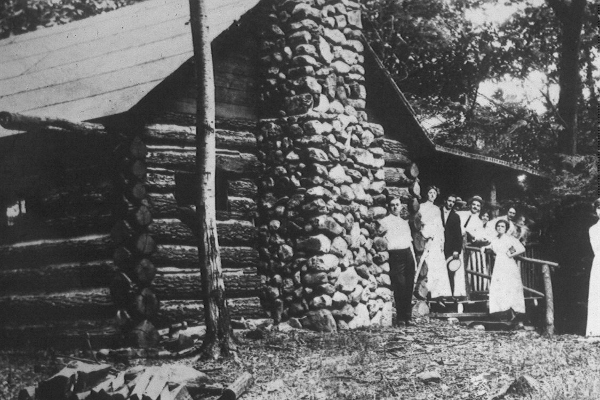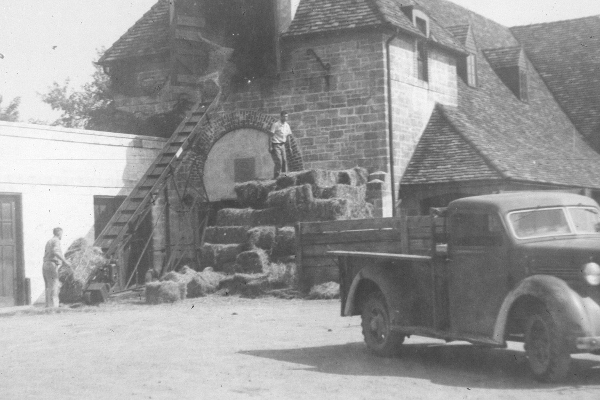
Samuel H. Halle, who founded the Halle Bros. Co. department store with his brother, established his summer home far from the city in Kirtland, Ohio. Besides a summer house, the Halles added other extravagant amenities including a suspension bridge, a cottage, a horse stable, a vineyard, a rose garden, a swimming pool, tennis courts, and an air strip. The suspension bridge, built in the 1920s, was one-of-a-kind in Kirtland, and connected the summer house to a small cottage on the other side of the gorge. More than simply a leisure spot, however, it was a working farm. The Burnett family lived and worked the farm year-round.
The house sat on a large ravine. Easy to enter but very difficult to exit, the ravine became known as "Penitentiary Gulch." A local legend claims that the gulch was used to hold prisoners during the Civil War. True or not, the name "Penitentiary" stuck. Now a park, it is called Penitentiary Glen.
The Halle family used their summer estate to host parties, community celebrations, and important visitors. Each year the Halle family hosted and sponsored a "Pioneer Picnic" for the community that brought together people from all over Lake and Geauga counties. Samuel Halle continued to visit the summer home until his death in 1954. His five children inherited the property. The summer house burned down in the 1960s, and the horse barn, which had a hay loft and a considerably large tack room, was leased out in the early 1970s as a "Country Estate" under the Cleveland Trust Company's ownership. In 1975 Lake Metroparks purchased the property from the Cleveland Land Trust Company. The park district used the horse barn first as its headquarters. In the 1980s it was transformed into a nature center and continues to serve the public in this fashion today.
Visitors today can take a self-guided historic tour of the old Halle farm. Only two pillars on either side of the park's gorge hint at the onetime presence of the suspension bridge. All that remains of the Halles' summer home is its foundation. Remnants of the Halle gardens, landscaping, and orchards linger on in the park, and can be seen from the trails.
Images






